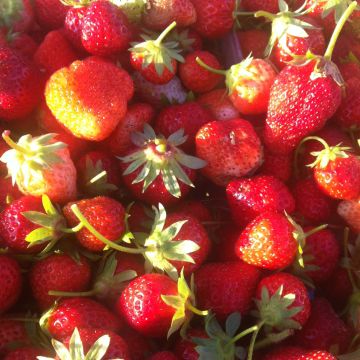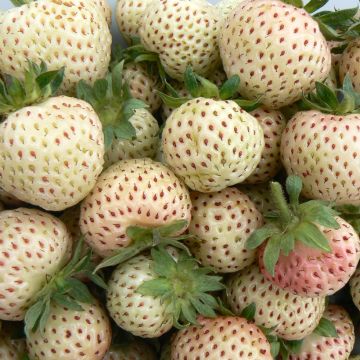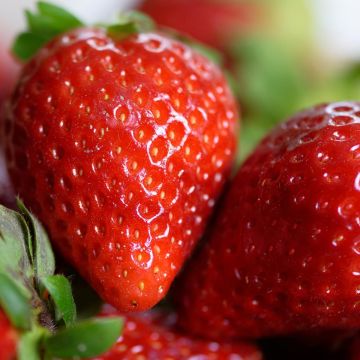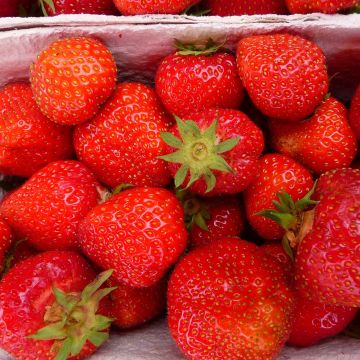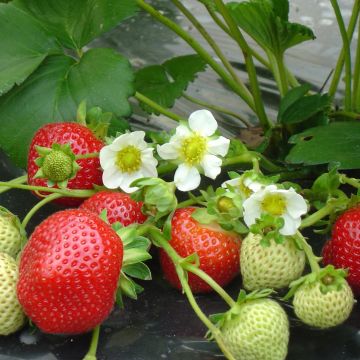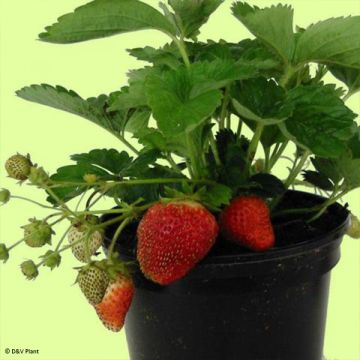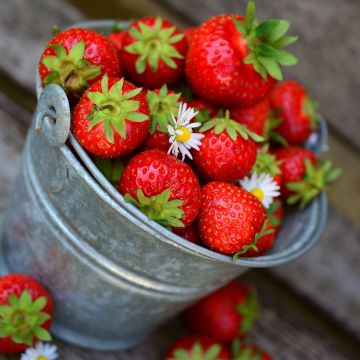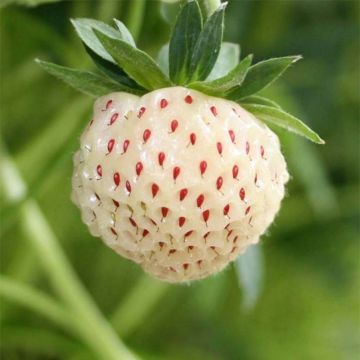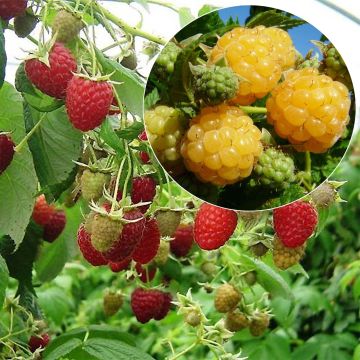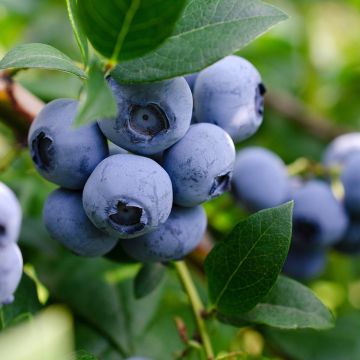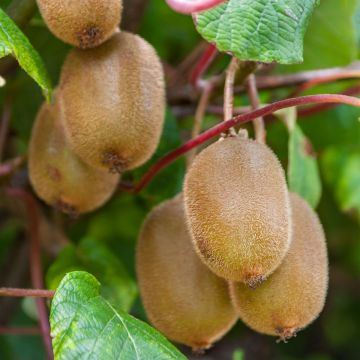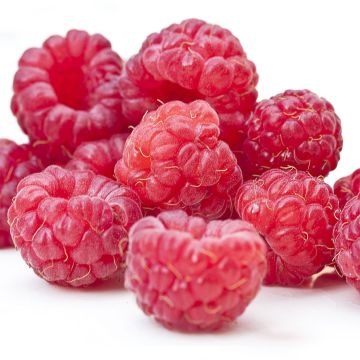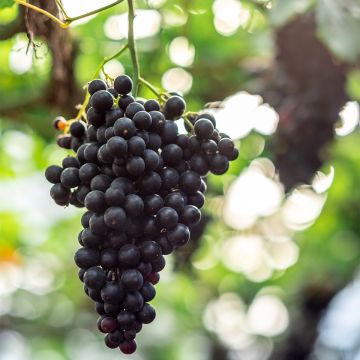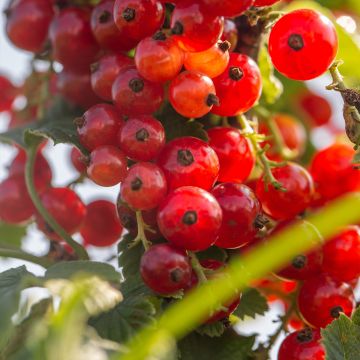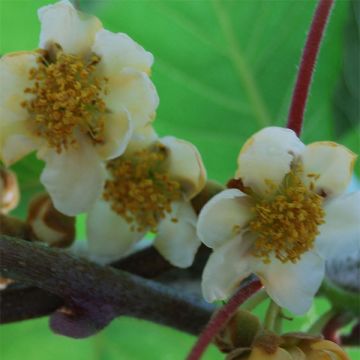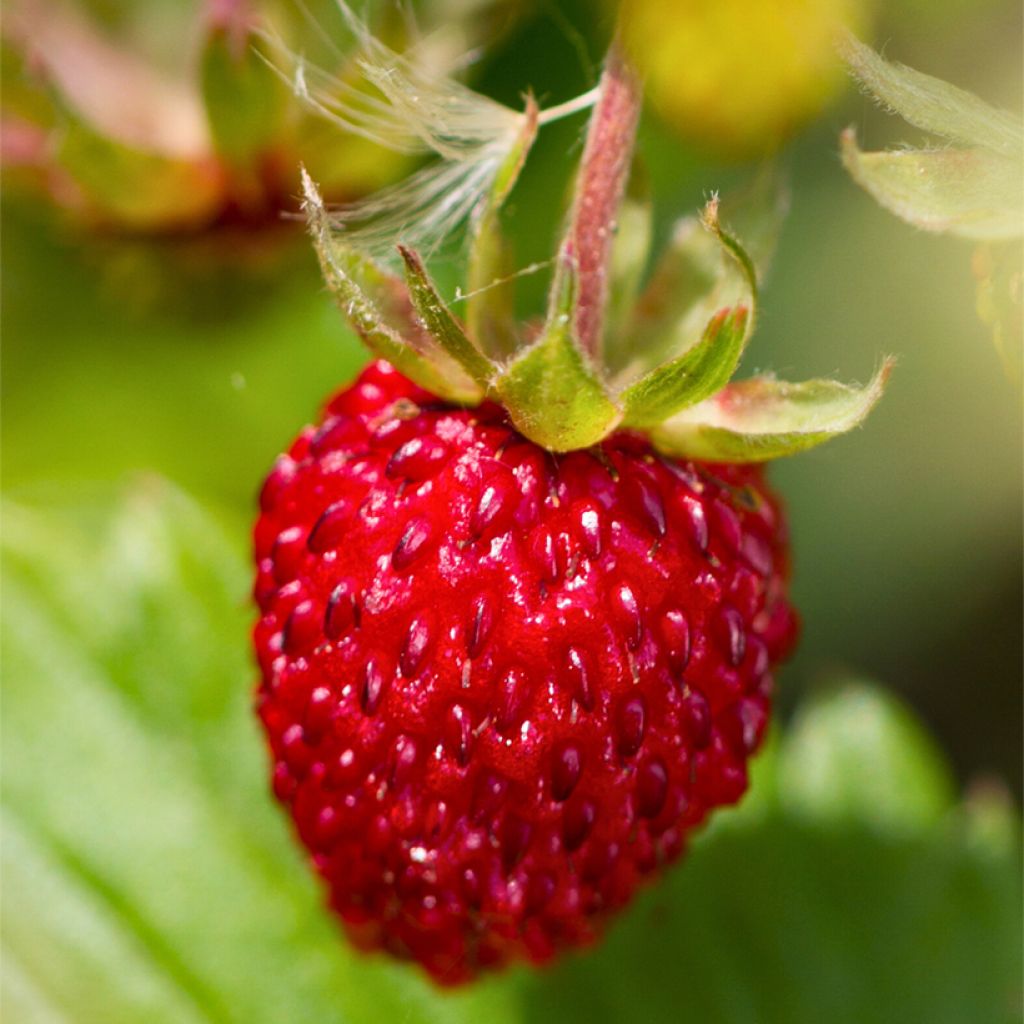

Wild Strawberry Rügen - Fragaria vesca
Wild Strawberry Rügen - Fragaria vesca
Fragaria vesca Rügen
Wild Strawberry, Woodland Strawberry, Alpine Strawberry, European Strawberry
This item cannot be shipped to the selected country
Delivery charge from €6.90
More information
Delivery charge from €6.90
More information
Schedule delivery date,
and select date in basket
This plant carries a 12 months recovery warranty
More information
We guarantee the quality of our plants for a full growing cycle, and will replace at our expense any plant that fails to recover under normal climatic and planting conditions.
From €7.90 for pickup delivery and €6.90 for home delivery
Express home delivery from €8.90.
Does this plant fit my garden?
Set up your Plantfit profile →
Description
Fragaria vesca 'Rügen' is a wild strawberry that stands out for its generous yield and its larger fruits compared to most other wild strawberries. It is also a ground-covering plant that can be used to dress the base of trees and bushes in a flower bed. It will fit well in the vegetable garden or in a pot on a terrace. It does not produce stolons and only multiplies through sowing. From April onwards, it is covered in small white flowers with 5 petals that give rise to very aromatic, red wild strawberries. Harvest them from May until the first frost. This strawberry thrives in rich and humus-bearing soil, in partial shade or not too intense sunlight.
Belonging to the Rosaceae family, like many other fruit trees (raspberry, cherry, apple, plum...), the wild strawberry, Fragaria vesca, is a very common perennial plant in Europe. It usually grows at the edge of the undergrowth, where the leaf litter provides a suitable carpet for its development. The 'Rügen' variety is an old selection of wild strawberries from 1920, named after the island located in northern Germany. It is a ground-covering plant that, unlike Fragaria vesca, does not produce stolons. It only multiplies through sowing. Its leaves are composed of three dark green, toothed leaflets, evergreen in not-too-cold climates. The young leaves are edible in salads. From April, more sporadically in the heart of summer, and again in September, this wild strawberry is covered in 5-petaled white flowers with a yellow central cone. These flowers produce wild strawberries a few weeks later, small red fruits with an unmistakable taste, and so easy to pick. The fruits of the 'Rügen' variety are larger than those of the wild species. Slightly elongated, they have that typical wild strawberry taste and can be enjoyed fresh, in coulis, in pastries, jams...
Hardy and undemanding, Fragaria vesca 'Rügen' finds a place in all gardens, as a ground-covering plant, planted at the base of trees or bushes or in a flower bed. It will be perfect in a pot or in the vegetable garden. Pair it with other varieties of wild strawberries like Fragaria 'Yellow Wonder' with white fruits or 'Alexandria' with lighter foliage to vary the selection. In a partially shaded wild flower bed, it will blend beautifully with taller perennial plants like Astrantia major 'Roma' with pale pink flowers and Bleeding Heart 'Aurora' with white flowers.
Flowering
Foliage
Plant habit
Botanical data
Fragaria
vesca
Rügen
Rosaceae
Wild Strawberry, Woodland Strawberry, Alpine Strawberry, European Strawberry
Fragaria vesca 'Improved Rügen'
Cultivar or hybrid
Other Strawberry plants
View all →Planting and care
The 'Rügen' wild strawberry thrives in both full sun and partial shade as long as the soil remains moist in summer. Avoid intense sunlight, especially in the south. Plant your strawberry in a rich, humus-bearing, moist, and well-drained soil. It dislikes waterlogged soils. It is an easy and hardy plant that requires little maintenance. Mulch around its base to retain soil moisture. It reproduces through sowing and does not produce runners.
Planting period
Intended location
Care
This item has not been reviewed yet - be the first to leave a review about it.
Berries
Haven't found what you were looking for?
Hardiness is the lowest winter temperature a plant can endure without suffering serious damage or even dying. However, hardiness is affected by location (a sheltered area, such as a patio), protection (winter cover) and soil type (hardiness is improved by well-drained soil).

Photo Sharing Terms & Conditions
In order to encourage gardeners to interact and share their experiences, Promesse de fleurs offers various media enabling content to be uploaded onto its Site - in particular via the ‘Photo sharing’ module.
The User agrees to refrain from:
- Posting any content that is illegal, prejudicial, insulting, racist, inciteful to hatred, revisionist, contrary to public decency, that infringes on privacy or on the privacy rights of third parties, in particular the publicity rights of persons and goods, intellectual property rights, or the right to privacy.
- Submitting content on behalf of a third party;
- Impersonate the identity of a third party and/or publish any personal information about a third party;
In general, the User undertakes to refrain from any unethical behaviour.
All Content (in particular text, comments, files, images, photos, videos, creative works, etc.), which may be subject to property or intellectual property rights, image or other private rights, shall remain the property of the User, subject to the limited rights granted by the terms of the licence granted by Promesse de fleurs as stated below. Users are at liberty to publish or not to publish such Content on the Site, notably via the ‘Photo Sharing’ facility, and accept that this Content shall be made public and freely accessible, notably on the Internet.
Users further acknowledge, undertake to have ,and guarantee that they hold all necessary rights and permissions to publish such material on the Site, in particular with regard to the legislation in force pertaining to any privacy, property, intellectual property, image, or contractual rights, or rights of any other nature. By publishing such Content on the Site, Users acknowledge accepting full liability as publishers of the Content within the meaning of the law, and grant Promesse de fleurs, free of charge, an inclusive, worldwide licence for the said Content for the entire duration of its publication, including all reproduction, representation, up/downloading, displaying, performing, transmission, and storage rights.
Users also grant permission for their name to be linked to the Content and accept that this link may not always be made available.
By engaging in posting material, Users consent to their Content becoming automatically accessible on the Internet, in particular on other sites and/or blogs and/or web pages of the Promesse de fleurs site, including in particular social pages and the Promesse de fleurs catalogue.
Users may secure the removal of entrusted content free of charge by issuing a simple request via our contact form.


































